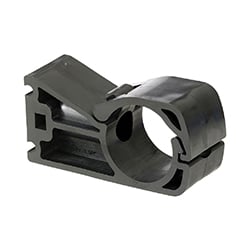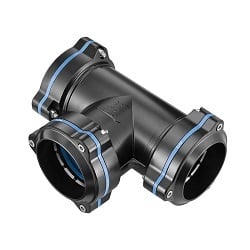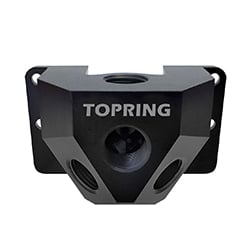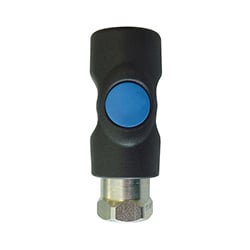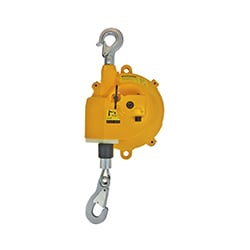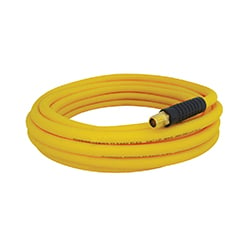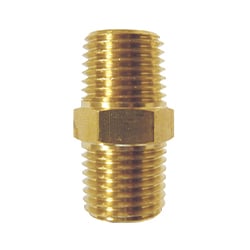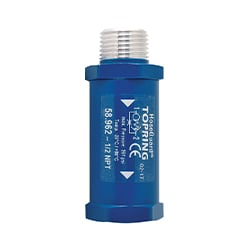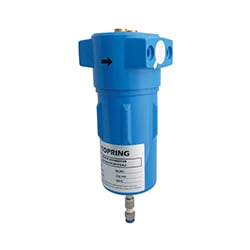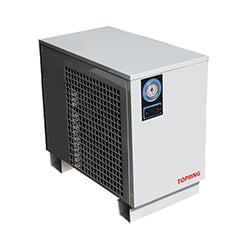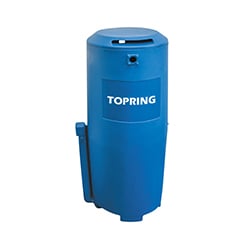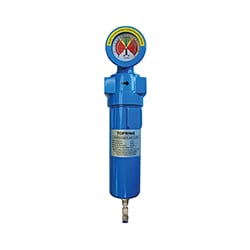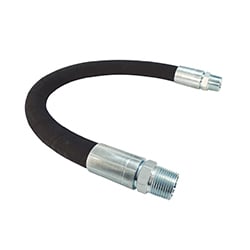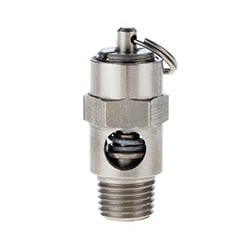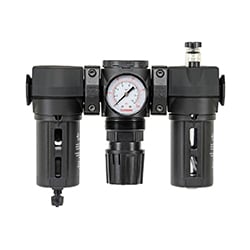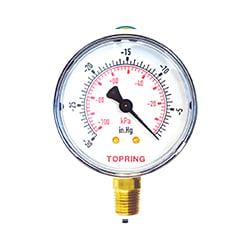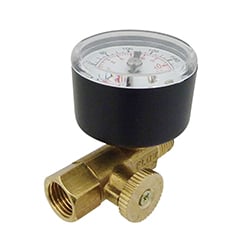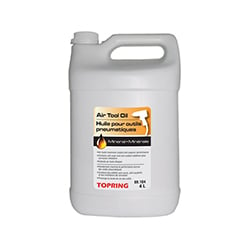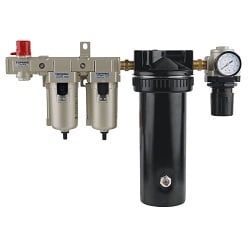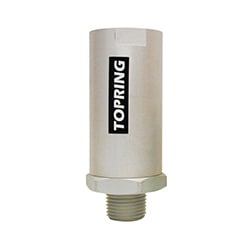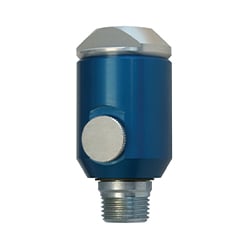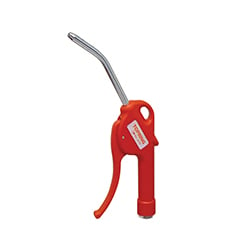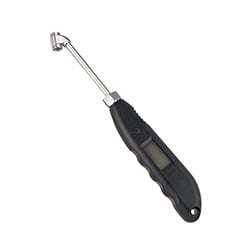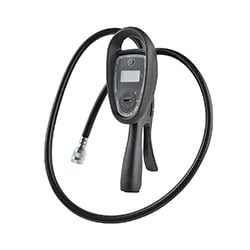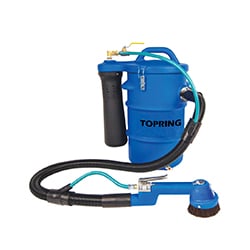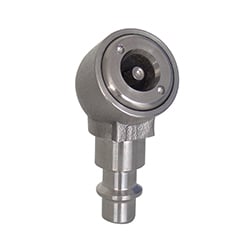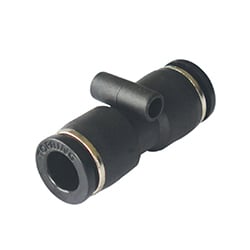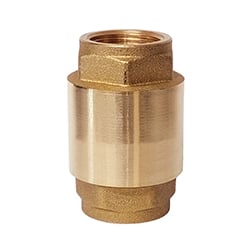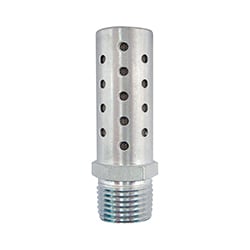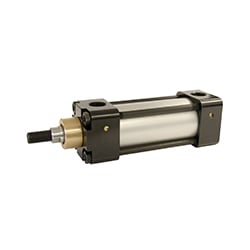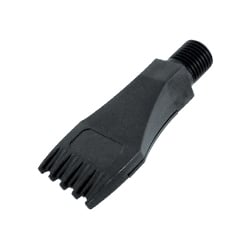When was the last time you serviced your filter, regulator, or lubricator? If you ask yourself when was the last time you performed FRL maintenance, it may be time to do so.
Air preparation at the point of use is very important and should not be overlooked. Here are 4 easy steps to follow to ensure proper maintenance of your system.
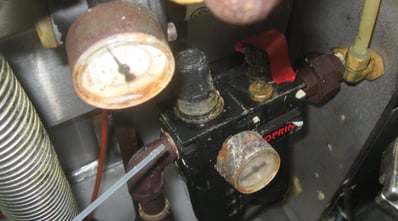 |
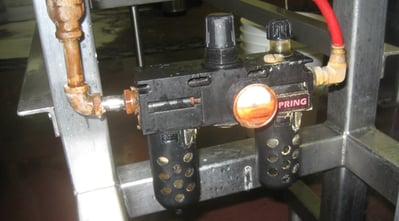 |
If your FRL looks like one of these, its parts need to be maintained or even replaced because its operation is likely far from optimal.
First of all, make sure your FRL is properly assembled based on the F + R + L or F/R + L sequence. The arrows on each component indicate the direction of the air. Make sure these arrows point to the tool or application, not the other way around. Many FRL parts become prematurely worn just because they were installed improperly or in the reverse direction.
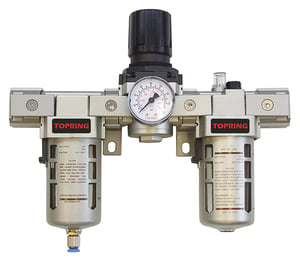
Tip No. 1: Change the filter cartridge regularly
Filter maintenance is essential. When in use, the filter element traps contaminants. It also filters any water from hot water steam and oil vapors generated by the compressor. These vapors cool and condense into water as they travel through the compressed air system. This is inevitable even when steps are taken to treat the air as it exits the compressor.
Over time, the filter eventually reaches its impurity retention capacity and becomes clogged. If the air filter is not changed in time, the filter creates a difference in pressure. Air can no longer circulate freely. Water is neither filtered nor eliminated. As a result, power is wasted and poor air quality leads to problems with pneumatic tools and equipment (rust), failure of lubricants (loss of efficiency), and if the temperature drops, a risk of frozen pipes.
When the filter element is changed, air can freely circulate again, energy consumption returns to normal, and water is eliminated at the point of application—all of which safeguards air quality.
When should you change the filter element?
The saturation of each filter element depends on how air is treated when it leaves the compressor, as well as how often the compressed air system is used (continuously or occasionally). Plan to change your filter elements at least once a year, for example, during your shutdown period if you have one.
For more safety, many filters are fitted with a pressure drop indicator that signals when the filter element needs to be changed. You can also use an electric differential pressure sensor that emits a signal from a distance.
As a rule, standard filter elements must be changed when the pressure drop is around 7 PSI. High-efficiency filter elements must be replaced when the pressure drop reaches 10 PSI.
It’s easy enough to see when a filter element needs to be replaced. The cartridge, which is usually white when first installed, becomes dark when clogged with impurities. Here’s an example of a new air filter versus an air filter that needs to be changed.
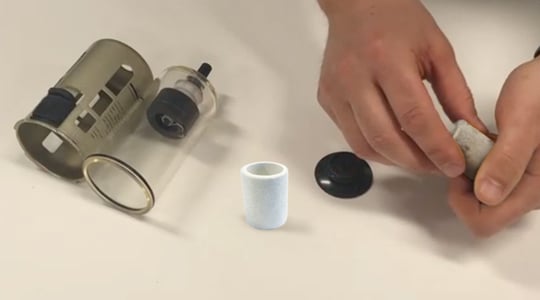
A saturated air filter causes a pressure drop in the system, which increases energy costs and lessens the system’s efficiency.
Replacing the air filter
How you change the filter cartridge depends on the filter model and type. You can generally replace a filter element with a new one by cutting off the air intake, releasing residual air pressure, removing the filter bowl, then unscrewing the filter element. This can be done on a pressurized system by way of the lockable exhaust shut-off valve used to isolate the FRL.
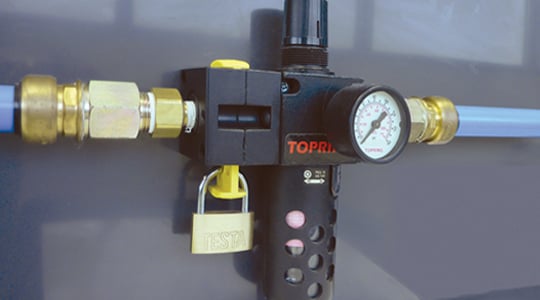
Check out this short instructional video on how to replace the filter element of an AIRFLO filter.
Tip No. 2: Check the condition of the filter bowl
Take a good look at the condition of your filter’s bowl. If it’s cracked or fissured, replace it immediately. A defective bowl causes air loss or, worse, may burst and project hazardous fragments. Every air leak, no matter how small, adds up and significantly increases the power bill.
Bowls are available in a range of materials, delivering improved resistance. Clear polyurethane bowls are resistant to most chemicals. Metal bowls lined with a visual gauge provide 360° visibility without compromising the safety and resistance of metal bowls. Bowls with guards are protected from impacts and breakage.

There are several ways to check for air leaks and wear of compressed air system components, including with soap.
Tip No. 3: Make sure you adjust the regulator
The regulator’s role is to maintain constant air pressure, whatever the fluctuations in the compressed air system. This prevents any variation in pressure that could lead to a variation in the speed of pneumatic tools and equipment. Regulators are also used to adjust the pressure or flow to the specific needs of the application. Some applications require pressure that is lower than the pressure of the main air system. A rule of thumb is that air tools usually need 90 PSI to operate.
Set the regulator based on needs and on the manufacturer’s recommendations. This will prevent overconsumption of air and yield power savings. In addition, it will reduce premature wear of tools and equipment due to overly high air pressure. Always check the regulator’s pressure gauge. Note that the pressure must be adjusted while the system is operating so the air supply reflects that actually needed.

Tip No. 4: Keep the right oil level in the lubricator
Most air tools and pneumatic components must be lubricated to work properly. The lubricator’s role is to continuously inject an oil mist into the system. This step prevents friction and wear of moving parts in pneumatic tools and equipment. It also protects and maintains your pneumatic motor in addition to protecting your system from corrosion during a shutdown phase.
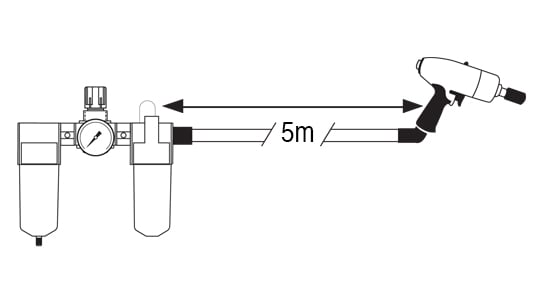
Keep your tools properly lubricated
Every air tool has its own specifications for lubrication. Too little oil causes excessive wear and premature breakage. Conversely, too much oil is a waste and a source of pollutants, clogging tools and equipment.
Adjust the lubricator’s tension using the control knob (often black) on top of the lubricator. Tighten or loosen the knob as necessary. To check if the tension is right, turn on a pneumatic tool or item of equipment and check the glass indicator on top of the lubricator. The indicator shows the drops of oil being released into the stream of compressed air.
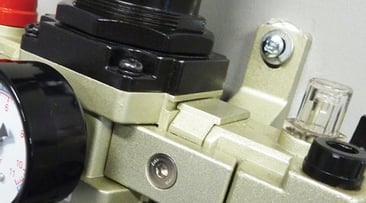
Very little oil is usually required. It’s best to set the lubricator so you see a drop of oil fall every 30 seconds while the tool is operating. No oil residue should be visible at the tool outlet.
Maintain the right oil level
To avoid running out of oil, periodically check the oil level in the lubricator. Lubricator bowls have markings to show the minimum and maximum required oil levels. When lined with metal, they have a visual gauge that provides 360° visibility. That means the content of the lubricator is visible at all times. Be careful not to exceed the required oil level or this may affect the quality of lubrication. How often you need to fill the bowl depends on the rate of use.
In conclusion
Now all you have to do is reinstall your FRL and reactivate your compressed air system.
For a checklist of things to look for when performing a complete maintenance of your air system, refer to Topring’s white paper 3-Step Maintenance Control for Compressed Air Systems.
Read Basics of Air Preparation (FRL) to learn more about how to improve air quality and extend the service life of your tools and equipment.


